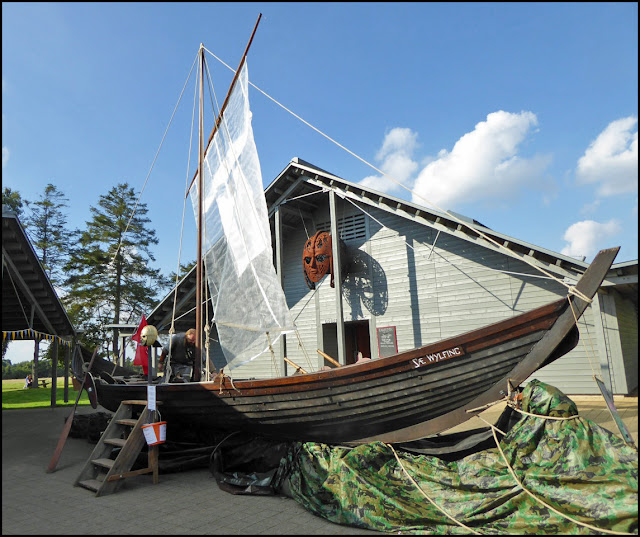We took a trip to the sea at Dunwich Heath on Saturday, and while we were there, we noticed two Red-banded Sand Wasps. One flew across our windscreen and you may just be able to make out the other in the photo above. I took a quick record shot (the photo you see), but the insect flitted off before I could take a better photograph.
I have noticed these unusual Sand Wasps on the heath before. This is what I wrote
a year ago:
'... my eyes fell upon this strange insect, which I guessed was a kind of
ant. There were three of them in the area, if I remember correctly, but
they were pretty speedy creatures and hard to catch on camera as the
kept vanishing beyond the wire netting. I was browsing the web earlier today when I spotted a photo of the insect here on the RSPB Lakenheath Fen page. The creature turns out (it seems to me) to be Red-banded Sand Wasp (Ammophila sabulosa). It has even appeared on a Romanian postage stamp. You can read about the wasp's kleptoparasitic behaviour in the Comments here on the iSpot nature website.
These wasps are quite striking. They are long, thin and ant-like.'
 |
| My photo from 2014 |
The heath was looking colourful, with the last flush of summer shades.
There were a few insects about, though we saw few birds.
The sign serves as a reminder that this coastal landscape is a very fragile one. The sandy cliffs are prone to
erosion and at the mercy of east coast storms.
The heath divides the sea (right) from the a wooded area to the left of this photograph. It will soon be the
deer rutting season.
I have a hunch that this is either
Birch Brittlegill Russula betularum or a similar species. I believe it is
poisonous. There were certainly plenty of birch trees at the back of the reserve. I see 'Red
Russula' were
recorded on nearby Westleton Heath.
Fungi identification is not my forte, so please feel free to leave a comment if you can help with an ID.
 |
| Is this a 'Blusher', Amanita rubescens, perhaps? (see last photo on this link) |
The old coastcard cottages on the heath are now National Trust holiday properties, a cafe and shop.
We have seen more Kestrels than ever this summer. This one was a fair distance away, but we had a good view through binoculars.
My thanks to Facebook friends, Matt and Paul, for confirming that this looks like a juvenile Stonechat.
Saturday turned into such a lovely evening that we drove on the short distance to Southwold, where we had fish and chips overlooking the River Blyth. You can make out
Walberswick on the far side. We were keeping an eye (and an ear) out for skeins of geese when we were suddenly alerted to the presence of a very strange gull silhouette. It was flying slowly over the water, and as it approached, we could see very clearly that it was a Barn Owl.






















































